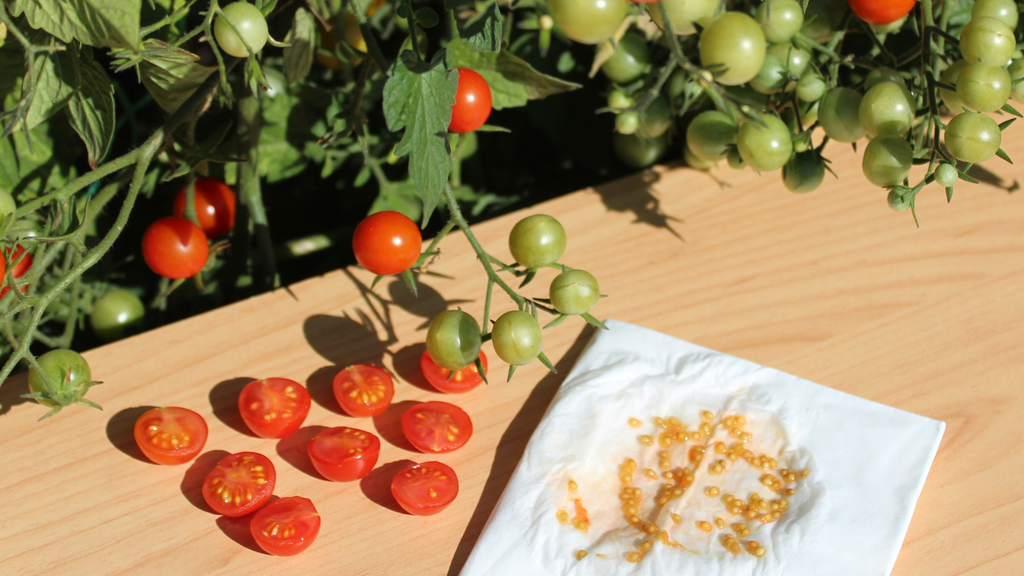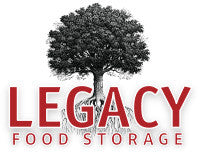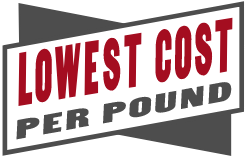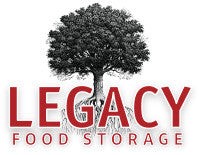
Seed Saving Made Simple
Buying and storing seed packets is a great way to get started in the gardening world! However, once you get into self-reliant gardening, buying seed packets every year can be expensive and unsustainable. Why not save the seeds that your plants produce this year for next year’s garden? It’s easy, cheap, fosters independence, and helps preserve heirloom seeds for future generations to benefit from. Let’s go through the simple steps that anyone wanting to save seeds needs to know.
The Background Knowledge of Seed Saving
Without getting too science-y, the first thing you need to know is the difference between these terms:
- Open-pollinated means stable genetics (aka, great for seed saving)
- Hybrid means that the genetics of the seeds are not guaranteed and are not a great choice for seed saving.
- Heirloom refers to a variety that has been consistent for an extended period. (these are considered open-pollinated).
- Self-pollinating plants are easy to save seeds without worrying about random genetic issues. This includes plants like tomatoes.
- Cross-pollinating plants. are plants that need to be pollinated by another adjacent plant and therefore offer more opportunity for variable results in the next generation. Cross-pollinated plants include things like squash and cucumbers.
These distinctions should be clearly marked on the original seed packet.
Advanced Tip: If you want to really get into seed saving, you can isolate cross-pollinating plants and hand-pollinate them to ensure the accuracy of offspring, but this is beyond a basic level.
Go To The Source
Sometimes your ability to save seeds in the first place stems from the quality of the seeds you bought to kick off the season. Look for high-quality seeds that are designed for seed-saving purposes. The cheap seeds you can buy at Home Depot, Walmart, and other similar stores are typically lower-quality seeds and are almost never heirloom varieties. This means it can be harder to start the plants to begin with, and it is also harder to save quality seeds from your harvest for next year. When looking to get into seed saving, always start off with high-quality seeds.
The Basics of Seed Saving
- Harvesting: When you’re trying to save seeds for future use, it is critical that you harvest the seeds, fruit (containing seeds), or pods when they are fully ripe. Premature harvest will result in seeds that will not germinate. Look up what this means for your specific plant if you are unsure. But, for example, you can save seeds from a fully red, ripe tomato, but not from a green tomato.
- Cleaning: Remove the seeds from their case (whether it be the fruit, a pod, or whatever) and remove any pulp. Wash them and ensure you have only the seed and no outer casings, debris or coatings. Again, this will look different depending on what plant you are working with, but that is the general idea.
- Drying: Spread the seeds out on a paper towel and let them dry out in a cool, dry, well-ventilated spot out of direct sunlight. Do not use ovens or humid basements.
- Storing: Store them in an airtight container. A mason jar with a secure lid and a desiccant packet is my preferred method for storage, but there are many ways to achieve a similar thing. Vacuum sealers can also help store them for the long term. Be sure to label the container clearly with the variety and year!
Tips for Specific Popular Varieties
Tomatoes - Tomato seeds come in a pulpy gel coating that can be difficult to remove. Simply scoop the seeds into a jar or bowl and let them sit at room temperature (out of direct sunlight) for 2-4 days until a mold/scum layer forms. Remove the scum layer, rinse the seeds, and dry and store them as described above.
Peppers - Before harvesting, ensure the pepper turns its final mature color. This will be different for each variety. Slice open the seeds from the core and air-dry them on a paper towel. Store as described above. Keep in mind that peppers can cross-pollinate sometimes. If you grow multiple varieties in close proximity, there is a chance the plants you grow from the seeds will have characteristics of multiple adjacent varieties.
Cucumbers - Cucumber seeds are only ready when the cucumber looks overripe. The fruit should be yellow/orange and obviously past the eating stage, but not rotting yet. Scoop out the seeds and rinse them. If the pulp is clinging on, ferment it as described in the tomato section above. Dry them very well before storage.
If you’re unsure how to save the seeds from a particular plant, I recommend looking it up on the Seed Savers’ Exchange website or Minnesota State University’s Extension website. These are both good sources I have found to be reliable in the past.
Parting Wisdom
Seed saving can be easy and save money, but it can be a headache if you do it wrong.
- Never save seeds from diseased plants. There is a possibility that the disease will present itself again next year and do the same thing.
- A great idea is to keep notes about each variety and keep everything clearly organized and labeled. It might seem obvious right now, but in 6 months, all the seeds will start to look the same, and you will question everything.
Lastly, if you’re feeling overwhelmed, just pick one or two crops to save this year and see how it goes. Start small with saving the seeds from one fruit. Your future self will thank you! It can feel like a lot to learn if you think about it all at once. But if you focus on one plant and one skill at a time, it’s the progress that really makes a difference from year to year. Happy Gardening!
About This Expert:
Lara Wadsworth is a freelance horticulture writer with a Bachelor's degree in Horticulture and over three years of experience creating engaging content about gardening and plant care. As a wife, mom, and dog lover, Lara understands the importance of balancing a busy life with a thriving garden. She values practical advice and effective strategies that empower beginners and experienced gardeners alike to grow with confidence. Through her writing, she aims to inspire others to enjoy the rewards of gardening, no matter their skill level.
Tags
- All
- 25 year food
- 25 year shelf life food
- 72 hour kit
- Best food storage types
- Best long-term food storage
- Blizzard preparedness
- Budgeting
- canning
- Certified GMO-free Emergency foods
- Certified GMO-free foods
- Coffee
- Comparison of emergency food methods
- Composting tips
- Dangers of genetically modified foods
- dehydrated food
- Edible Wild Plants
- emergcy preparedness
- Emergency Cooking
- Emergency Food
- Emergency food Christmas gifts
- emergency food storage
- Emergency Food Supply
- Emergency food supply recommendations
- Emergency Planning
- Emergency Preparedness
- Emergency preparedness advice
- emergency preparednesss
- Emergency Supplies
- Emergency supplies checklist
- Emergency Survival
- emergency survival gear
- Emergency survival kit checklist
- Emergency Survival skills
- exercise
- Family emergency preparedness
- Family emergency preparedness plan
- Family Preparedness
- Food Storage
- Food storage 25 year shelf life
- Food storage amounts
- Food storage Christmas
- Food storage containers long term
- Food Storage Secrets
- Food storage serving size
- Food storage types compared
- freeze dried food
- Freeze dried food storage
- freeze dried meats
- Freeze-dried emergency food storage
- Fruit Trees
- Gardening
- Getting Started
- Gluten-free food Storage
- Gourmet emergency food
- Healthy food storage
- How much emergency food to store
- Improved emergency preparedness
- Jared Markin
- Jared Matkin
- Legacy Premium
- Lessons learned from Hurricane Sandy
- Lessons learned from natural disasters
- long-term food storage
- Long-term Food Storage Guidelines
- Long-term Food Storage tips
- Long-term water storage
- Mental Emergency Preparedness
- Mental toughness
- Money-saving tips
- Natural disaster planning
- Natural Disasters
- Perfect Christmas gifts
- Pet Emergency preparedness checklist
- Pet Emergency preparedness kit
- Pet Emergency Survival tips
- Pets and Emergency Preparedness
- Plant Foraging
- portable solar panels
- portable solar power
- portable water filters
- protein drinks
- Risk of genetic modification
- Seed saving and storage
- Seed saving guide
- Self-reliance
- Self-reliant practices
- Shelf Life
- Solar Cooking
- Solar Ovens
- Special Dietary needs
- Stranded in a car in a blizzard
- Survival food
- Survival Gear
- survival kit
- Survival kits
- Survival Ovens
- Survival Skills
- survivalist gear
- suvival kit
- Tree Pruning tips
- Tree Trimming basics
- unique ideas
- water bottle with filter
- water filter
- water filter straw
- water filters
- Water Filtration
- water pitcher with filter
- water pitchers with filters
- Water purification
- Wild Food Foraging
- Winter composting
- Winter driving
- Winter preparedness tips
- Winter storm preparedness tips
- Winter Survival







